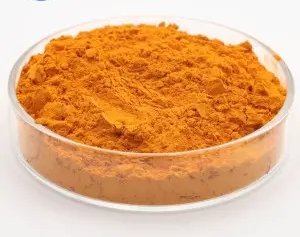Indium Sulfide Powder In₂S₃
Princeton Powder is a leading supplier of Indium sulfide (In₂S₃) powder, offering it in various particle sizes to meet customer needs. The particle size and morphology are critical for the performance of Indium sulfide in thin films and coatings, influencing light absorption, electron mobility, and catalytic efficiency. Our Indium sulfide powder is available at a competitive price.
Formula | Indium Sulfide, In₂S₃ |
CAS Number | 12030-24-9 |
Purity | 99.9% min |
Synonyms | Indium Sulfide powder, Indium Sulfide refractory powder, Indium Sulfide thermal spray powder, Indium Sulfide ceramic Powder |
Particle Sizes | 325 mesh or be customized |
Shape | Irregular |
Melting Point | 1050 °C |
Appearance | orange-red powder |
Density | 4.45 g/cm 3 |
Description of Indium Sulfide Powder In₂S₃
Indium sulfide (In₂S₃) powder is a semiconductor compound composed of indium and sulfur, known for its applications in photovoltaics, electronics, and catalysis. It can be produced through methods such as solid-state reactions, chemical vapor deposition (CVD), hydrothermal synthesis, and mechanical milling, allowing for control over particle size and morphology. In applications, In₂S₃ is often processed into thin films for solar cells and semiconductor devices, enhancing energy conversion efficiency and device performance.ithstand extreme conditions.
Application of Indium Sulfide Powder In₂S₃
Photovoltaic Cells: In₂S₃ is used as a light-absorbing material in thin-film solar cells, processed into films via CVD or sputtering to enhance energy conversion efficiency.
Semiconductor Devices: Indium sulfide functions as a semiconductor in applications like transistors and photodetectors, deposited as thin films on substrates for device fabrication.
Optoelectronic Devices: Its semiconductor properties make In₂S₃ suitable for optoelectronic devices, including LEDs and lasers, incorporated into structures through thin-film deposition techniques.
Catalysis: Indium sulfide exhibits catalytic properties in hydrogenation and photochemical reactions, processed into pellets or extrudates for chemical reactors to improve reaction efficiency.
Sensors: Employed in gas sensors and environmental monitoring, In₂S₃ is used to fabricate sensor films or coatings that respond to specific gases.
Indium Sulfide Powder In₂S₃r Scholar Articles
Nanocrystalline gallium sulfide (Ga2S3) and indium sulfide (In2S3) have been prepared by a two-step process. The first step involves metathesis reaction of trimethyl gallium/indium ether adduct (Me3Ga/In·OEt2) with 1,2-ethanedithiol (HSCH2CH2SH) resulting in the formation of a polymeric precursor. The precursor complex has been characterized using Ga/In analysis, IR, proton NMR and mass spectroscopy. The thermal behavior of both complexes has been studied using thermogravimetric (TG) analysis. In the second step, these precursor complexes have been pyrolysed in furnace under flowing nitrogen atmosphere whereupon they undergo thermodestruction to yield nanometer-sized particles of gallium/indium sulfide. The nanoparticles obtained were characterized using powder X-ray diffraction (XRD), transmission electron microscopy (TEM), selected area electron diffraction (SAED) and energy dispersive X-ray spectroscopy (EDS). The average size of the nanoparticles ranged from 10 to 12 nm for Ga2S3 and 20 to 22 nm for In2S3, respectively. This is the first report on use of a binary single source precursor to synthesize β-Ga2S3 nanoparticles.

